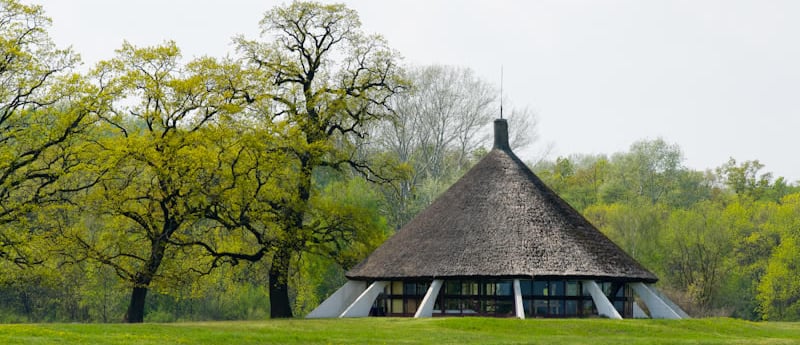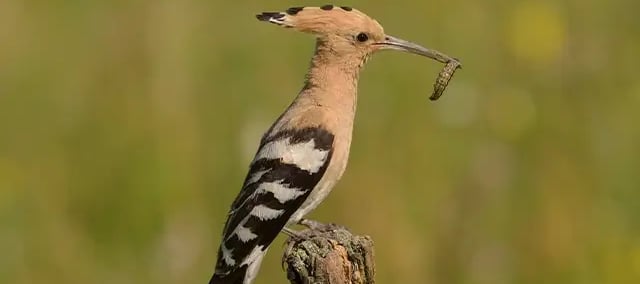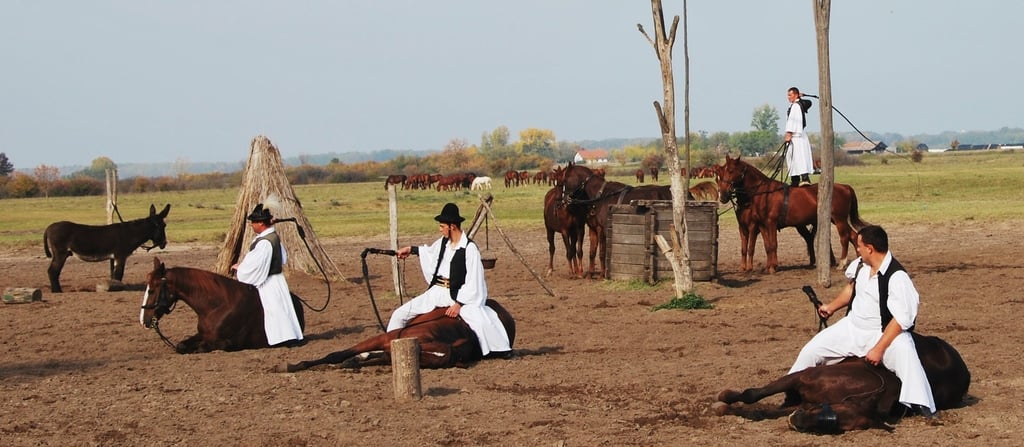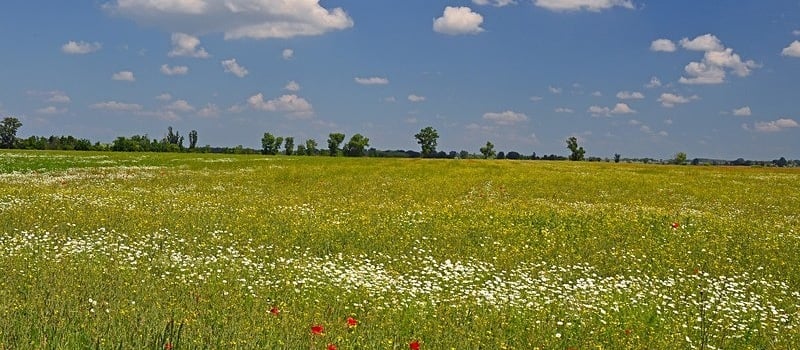Kiskunság National Park
A vast mosaic of sands, saline lakes, grasslands, and soft woodlands where Central Europe’s wild heart breathes under open skies.


A Steppe in Hungary: Origins and Ecological Significance
Kiskunság National Park sprawls across the center of Hungary, covering nearly 600 square kilometers of plains between the Danube and Tisza rivers. Established in 1975 and recognized by UNESCO in 2000, the park protects a uniquely shaped mosaic: shifting sand dunes, saline soda lakes, alkali grasslands, scattered forests, and pastoral landscapes shaped by centuries of low-intensity grazing. The area was once a vast steppe corridor where nomadic horsemen roamed; today, the park preserves not only biodiversity but also the intangible landscapes created by traditional shepherding, reed harvesting, and cattle grazing. In summer, undulating dunes glow golden under the sun; in early morning, flocks of waders feed along alkali lake shores; in autumn, wild herbs carpet saline flats in lavender bloom. It isn’t merely a reserve—it is a living cultural ecosystem, shaped by the interplay of climate, soil, pastoral tradition, and biodiversity resilience. Visiting Kiskunság means walking through the layered story of Hungary’s natural and human heritage, where ecological variety, cultural continuity, grassland stewardship, saline lakes, and sandy aridity define an extraordinary protected realm.
Sand Plains and Dune Dynamics
One of the most striking features of Kiskunság is its mobile sand dune system—once active and shaped by strong winds, now partly stabilized by grass and willow plantations. These dunes rise up to 50 meters, giving vantage points across grassland basins and saline meadows. Around them, pioneer plants like sand camomile and harestail grass thrive, anchoring the dunes in vegetative carpets. Water collects in wind-carved depressions, forming ephemeral ponds that fill in spring and support amphibians and mass insect emergences. Annually shifting sand and plant succession create a patchwork of habitats—open dunes, scrubby grass lanes, and forested ridges. Guided dune hikes offer insight into geomorphological changes, dune stabilization projects, and the flora that thrives in these harsh conditions. The dunes’ contrast with salt lakes and marshes just feet away illustrates the park’s dramatic ecological juxtaposition—dynamic desert-like sands next to ponds of shimmering brine, merging into wetlands within short walkable margins. This interplay governs regional diversity and gives the park an unmatched ecological texture.
Saline Lakes: Brine Mirrors of Biodiversity
A defining ecological characteristic of Kiskunság is its alkaline saline lakes—most famously Lake Kolon and Lake Szelidi. These shallow, mineral-rich basins crystallize winter, shimmer green in summer algal blooms, and support massive migratory bird congregations in spring and fall. Wading birds—Avocets, Black-winged Stilts, Kentish Plovers—stand knee-deep in vibrant shoals of brine shrimp and insect larvae. These lakes also host rare salt-tolerant plants such as Suaeda and Limonium, creating colorful salt meadows. Flora and fauna here carry ancestral ties to Pannonian steppe ecology, remaining viable in a limited but intense niche. Bird hides near the edges allow silent observation of thousands of feeding birds at sunrise. Bristle diets, shore nesting patterns, and bird call recordings enrich interpretive experiences. The lakes also serve as educational centers for regional water management, illustrating how saline ecology provides both ecological services and cultural landscapes. The combination of flat saline expansion with rich avian life makes the lakes a sensory highlight: mirror-like water under vast skies, dotted with flocks and crowned by mulberry-scented reed beds.
Visitor Experiences: Trails, Lakeside Comfort, and Biodiversity Tours
Guests may choose walking circuits around Kolon Lake, canoe along spring-fed channels, or tackle dune ridge hikes at dusk. Seasonal birding trains run guided dawn tours to Szelidi Lake. Recreational cabins line lake edges; ecological lodges offer overnight packages with early morning boat launches, evening star tours, and herb tea tastings in reed huts. Educational programs teach nighttime amphibian listening or moth trapping under full moon. Evenings bring star-lit quiet, accompanied by reed rustle and distant owl call. The landscape transitions across microhabitats—dunes to marsh to oak grove—with each trail offering interpretive stops. Signage stays minimal to preserve tranquillity, replaced by QR codes linking to plant and bird IDs. For accessible visits, lakeside boardwalks allow wheelchair access and guided relaxation platforms. The visitor experience in Kiskunság is slow-paced but richly layered: sunrise flocks, nocturnal chorus, historic dances, dune skate, reed craft insight, and deeply rooted quiet discovery.
Conservation Strategy and Steward Collaboration
Management of Kiskunság National Park aligns closely with traditional stewards—herders, salt meadow farmers, and communal governance bodies. Grazing lands are managed via permit systems to preserve meadow height and species richness; invasive shrubs are cleared, and water channels maintained under flood shifts. Monitoring includes butterfly transects, orchid mapping, and crane dispersion tracking. The park collaborates with local universities on grassland restoration research, evaluating grazing load adjustments and salt-phase recession treatment. Outreach programs support rural school nature clubs, community rewilding days, and habitat mapping by citizen scientists. On special occasions, local craftsmen demonstrate reed weaving in visitor centers, and annual salt meadow harvest days reward volunteers with local produce and performance. Through these efforts, Kiskunság remains a living example of how ecological science, traditional land use, citizen engagement, and heritage conservation can coexist in a modern national park.
Practical Information
Kiskunság National Park is accessible from Budapest via M5 highway or regional trains to Kiskunhalas and Kalocsa. Visitor centers are located at Lake Kolon, Szelidi Lake, and Fülöpháza, open April through November. Park entry is free; guided tours, canoe rentals, and festival participation vary in cost (typically 2,000–4,000 HUF per service). Seasonal birding tours, salt meadow workshops, and overnight lodging cabins should be booked in advance. Trails and boardwalks vary—some are sand soft, others firm gravel—so sturdy shoes and light gear are recommended. Accommodation ranges from eco-cottages lakeside to local pensions offering salted meadow honey breakfasts. Swimming is allowed in designated freshwater lakes only. Pets must remain leashed near wildlife areas. Public toilets and picnic areas are available at major points. Best visitation seasons are spring for bird migration, early summer for wildflowers, and autumn for grazing festivals. Core conservation zones—such as groundwater springs and orchard meadows—are accessible only with rangers.
Official Links
For maps, program schedules, tourism packages, and conservation updates, visit:
https://knp.hu/
Follow seasonal migration photos, festival alerts, and habitat stories at:
Instagram: @kiskunsag_nemzetipark
Facebook: Kiskunság Nemzeti Park Igazgatóság (Kiskunság National Park Directorate)


Grasslands, Steppe Species, and Traditional Pastoralism
Beyond dunes and lakes, wide grasslands host traditional herds of Hungarian Grey cattle and racka sheep, which graze to maintain open meadow habitat for species like ground-nesting larks, steppe buzzards, and black grouse. These grazing regimes replicate seasonal movements once traveled by horse-mounted cattle herders, maintaining short grasses while preventing woody succession. Grassland botanicals like sainfoin, burnet, and feather grass bloom at midsummer, drawing pollinators and sustaining prairielike rhythms. Shepherds tend flocks in shift rotation; visitors may meet them along trails or during heritage days. Educational quests explain how grazing intensity, fire regimes, and seasonality maintain steppe species richness. The park’s holistic model demonstrates that steppe ecosystems are living creations of moderate human interaction, not relics preserved by exclusion. As birds cycle inland, soil blossoms, and tradition continues, grasslands resonate with life—pastoral stewardship, grass flowers, steppe birds, grazing balance, and cultural continuity.
Riparian Woods and Spring-fed Valleys
Where the Danube and Tisza floodplains touch Kiskunság, riparian forests and spring-fed streams create a contrasting green corridor of willow, poplar, and alder. These areas support wet-loving species—beavers, otters, and rare nightjars using river islands for nesting. Interpretive trails showcase spring-fed fountains, shaded boardwalks, and hidden marsh interiors. In spring, forests fill with marsh orchid carpets and robin song; in early summer, dragonflies dance over shaded flood channels. Birdwatchers may spot white-tailed eagles circling above, while bees feed in willow blossoms and marsh roses. These riparian zones stand as sensitive buffers between the saline flats and arid dunes—forest flood corridors, spring water mosaics, riparian fauna, subterranean springs, and riverine gateways connecting wet and dry ecotones.
Village Life, Cultural Echoes, and Ethno-Ecology
Even nearby settlements such as Fülöpháza and Kiskunmajsa remain tied to salt-meadows and herding traditions. Local markets offer reed-based crafts, throat herbal syrups, salt bread, and steppe honey. Annual festivals like Crane Dance Day honor migratory shorebird rhythms with folk song, raptor handling exhibitions, and traditional reed canoe rides. Rural museums preserve musical instruments made from birch bark and reed whips as both utilitarian tools and musical symbols, performing on festival nights. Open-air museums display reconstructed herding huts, saddlery, and pastoral attire. Guides explain the salt grazing culture—how communities extracted salt crystals from evaporating alkaline soil, then grazed cattle upon the resulting pasture. Children may join short horseback rides or feeding sessions with heritage animals. These traditions demonstrate steppe heritage in practice, not exhibition, and give guests a sense of living cultural ecology, salt-steppe heritage, market gastronomy, rural festivals, and ethno-botanical identity.






Awarded with the Highest Distinction
Kiskunság National Park received the Excellence Award for its extraordinary union of salt-meadow ecosystems, dune habitat, floodplain wetland, pastoral heritage, and community-partnered conservation. It is worth the trip not only for rare birdlife and tranquil lakes, but for offering a living experience of human–land co-creation—a protected landscape where tradition, nature, and seasonal rhythms converge beneath open Hungarian skies.






